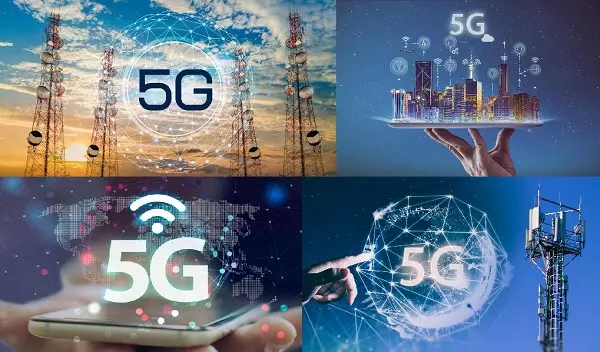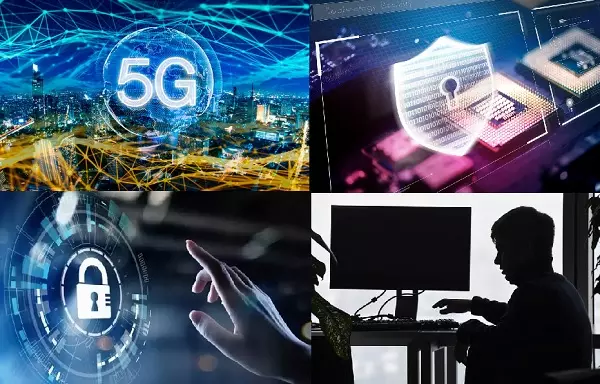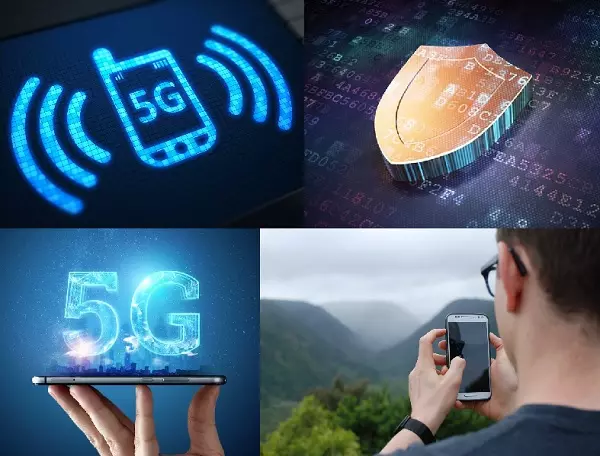What is 5G
5G is the fifth generation technology for cellular networks, which was deployed in 2019 by cellular phone companies. The previous generations of cellular technologies brought many new improvements, with 3G and 4G concentrating on improving mobile data. Currently, 5G is trying to continue improving mobile data, eventually replacing 4G overall. 5G will also aim to have higher download speeds and greater bandwidth, which will also allow 5G to be used as a general internet service provider for other devices.
How does 5G work
5G will transmit a massive amount of data over shorter distances, compared to 4G, which will stabilize the speed and the connection of the signal itself, especially when the user is in motion. Other benefits are that the 5G network will be able to support more devices than its predecessor, due to the fact that it will use a new signal spectrum. Lastly, due to the new energy-sufficient developments, it will use less power, which will use up less battery on your smartphone. Since we are outgrowing the limits of 4G, and as our world develops, we require more speed and more possibilities with our day-to-day connections.
What are some possibilities with 5G
One of the most apparent possibilities of 5G is the fact that the overall user experience when accessing the internet will improve. One of the other huge benefits that 5G will bring to the table are:
● Augmented reality will become the average for our daily lives. Augmented reality will overlay information in front of our view of the real world, for example, having prices appear over products, or show which way to go to your destination with the help of GPS. To support this, it requires a lot of data to make this experience a possibility, which will only be possible once 5G is accessible around the world.
● Another of the options is autonomous driving and the possibilities it has with 5G. For self-driving cars, they have sensors that process different obstacles and react with them, which is a massive amount of data that is processed, which will make the whole experience a lot more efficient through the connection of 5G. Additionally, cars will be able to interact with each other through the network and create a vastly safer driving experience.
Switching between networks increases risks
There is a risk when switching between 3G or 4G to 5G when it exposes vulnerabilities that haven’t been tackled in previous generations. An example of that risk is to allow earlier generation connections whenever a viable 5G signal isn’t available. The following dangers also include supplying 5G. The most recent concern regarding future risks is who will provide the network infrastructure, which is going to be Huawei. Recently, Huawei has been allowed by the UK to deploy in less critical areas of the national 5G network. The main concern is that manufacturers will engineer a back entrance in the system to steal data.
It is believed that the 5G network is a shared responsibility; it resembles the cloud service. Operators will be responsible for the security of the system while the government will dictate how to implement the 5G secure network. Corporations have to be aware of the potential security issues and risks of 5G and how they should prepare for them once 5G begins operating. These companies will be responsible for the security of data and how it is transported across the networks.
5G Cybersecurity concerns
The main cybersecurity concern of 5G is that it needs substantial improvements in order to avoid the risks of hacking. All of the risks involving the cybersecurity of the 5G network itself and the devices connecting to 5G puts consumers, governments, and companies at risk. An example of this would be decentralized security. That is when previous generations had fewer hardware traffic points, which made it easier to conduct security checks and upkeep. The problem with 5G is that it will have far more traffic points, and all of these points will need to be monitored, which will create compromised and insecure points.
The Future of 5G and Cyber Security
In order to secure the weaknesses in the national networks, the developers will have to be extra careful when approaching the security of the 5G network. An approach that the providers of 5G will take is to collaborate with cybersecurity firms to advance solutions for encryption and monitoring the network. The issue that some of the providers do not want to invest in the development of cybersecurity. If they received benefits from developing into 5G cybersecurity, they would be more likely to put in more protections for low-end consumer products.
How you should prepare for 5G
Even though it looks like 5G is closer than ever, it is still far away; nonetheless, you need to be prepared for the network. It’s essential to take security and privacy measures into your own hands, and here are some examples:
● Install antivirus programs on all of your devices.
● Use a VPN. This will protect your device from cybercriminals from accessing your data and view your online activity.
● Keep all of your internet devices updated. It’s crucial to have them up to date with the newest patches to have all of the security patches, including your smartphone, computer, and smart home device.
5G: More secure than 3G or 4G
5G network security is a difficult task to achieve; however, it’s believed that it will be more secure due to the encryptions being developed further on, which will be indefinitely more advanced than 3G or 4G. In theory, each new generation offers more security than the predecessor, which shouldn’t change for 5G. Network slicing will allow mobile providers to slice the networks into different cases or requirements to add security capacity ability for the 5G network. However, who will be responsible for the new generation network? The responsibility will fall onto the providers, and they’ll have to work with businesses in the early stages to look for future benefits and risks.






